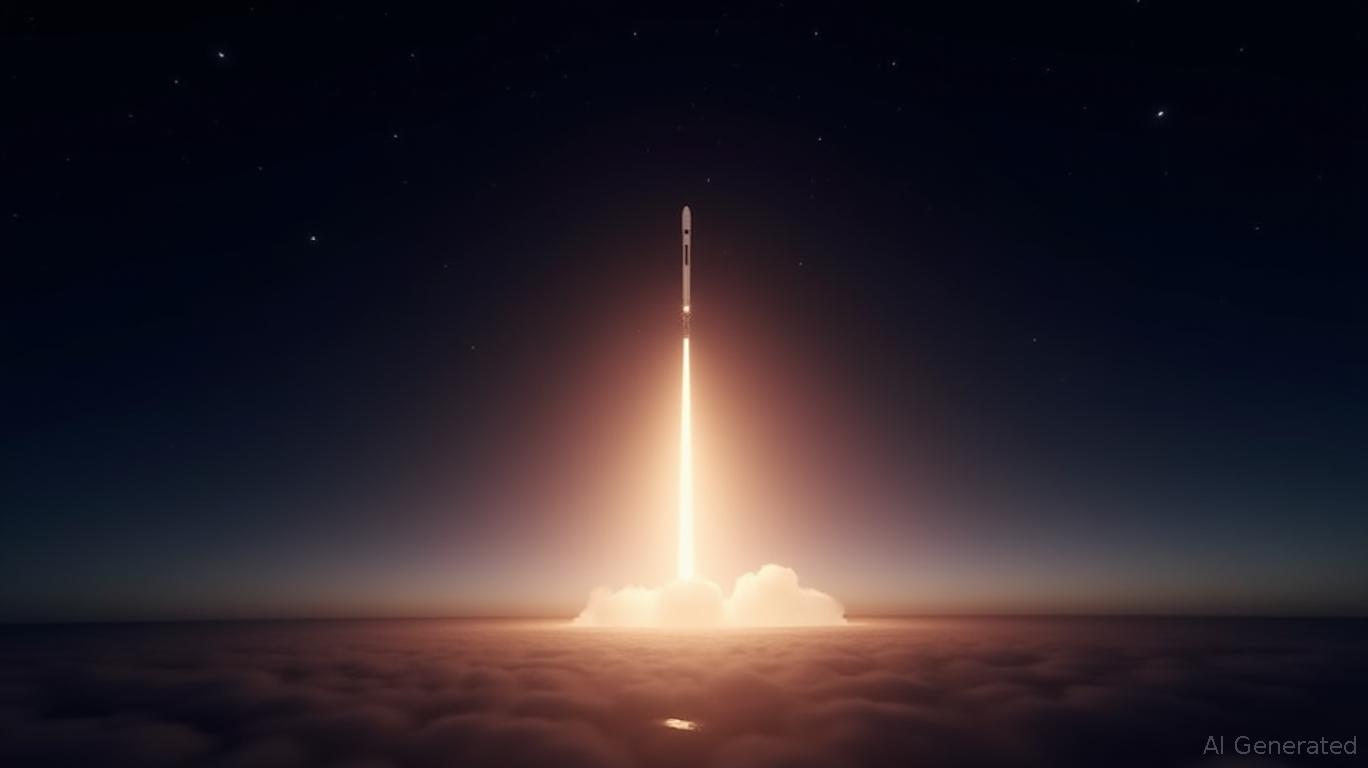Orbiting Opportunities: How SpaceX's SiriusXM Launch Maps the Future of Satellite Broadcasting
The June 7, 2025 launch of SpaceX's Falcon 9, carrying SiriusXM's SXM-10 satellite, marked a critical milestone in the satellite communications sector. This mission underscores a broader strategic battle unfolding in 2025: the competition between geostationary orbit (GEO) satellites, like SXM-10, and low Earth orbit (LEO) constellations such as Starlink. For investors, this launch offers a window into two key themes: the enduring value of specialized GEO infrastructure and the disruptive potential of LEO-based services.

The Strategic Duality of GEO vs. LEO
SiriusXM's SXM-10 satellite, built by Maxar Technologies, is designed for geostationary orbit—a position 22,000 miles above Earth. This allows the satellite to hover over a fixed geographic region, providing uninterrupted coverage for SiriusXM's radio broadcasts. Its 10-meter-diameter mesh reflector, developed with L3Harris, ensures high-power transmission to vehicles, a core requirement for SiriusXM's core automotive subscribers.
In contrast, LEO constellations like Starlink operate at altitudes below 1,200 miles, requiring hundreds or thousands of satellites to maintain global coverage. While LEO systems excel at broadband internet and low-latency communication, they struggle to match GEO's reliability for fixed-point broadcasting. This division of labor creates a strategic duality: GEO satellites dominate niche, high-reliability services (e.g., satellite radio, TV), while LEO constellations target mass-market connectivity.
SiriusXM's Financial Edge: A Case of Steady Growth
SiriusXM's strategy hinges on cost discipline and capital efficiency. In 2025, the company projects capital expenditures of $220 million—a fraction of the $2.2 billion SpaceX is pouring into Starlink annually—thanks to reusable Falcon 9 boosters like the one used for SXM-10. This launch utilized SpaceX's B1085 booster for its eighth flight, reducing per-mission costs to $52 million.
SiriusXM's free cash flow is projected to hit $1.15 billion in 2025, up from $1 billion in 2024, with a goal of $1.5 billion by 2028. This stability stems from its subscription model, which retains 90% of its 28 million subscribers annually. While LEO players like Starlink burn cash to scale, SiriusXM's GEO strategy prioritizes predictable, low-growth but highly profitable revenue streams.
LEO's Disruption and the Content Play
The LEO revolution, however, is reshaping the sector's boundaries. Companies like SpaceX and Amazon's Kuiper are not just competitors for spectrum or launch contracts—they're redefining what satellite services can do. Starlink's broadband, for instance, could eventually rival SiriusXM's in-car entertainment, but only if it integrates voice and podcast content at scale.
Here's where SiriusXM's content library—a trove of curated radio shows, podcasts, and live sports—becomes its secret weapon. The company's recent moves, such as expanding its podcast network and partnering with Tesla to enable IP-based streaming, position it to monetize content across both GEO and LEO platforms. Imagine SiriusXM's audio content beamed via Starlink's terminals in remote areas or integrated into LEO-powered in-flight entertainment systems.
Risks and Opportunities for Investors
- GEO's Limitations: As LEO systems mature, they may encroach on SiriusXM's territory. A $52 million launch cost for a single satellite feels increasingly inefficient compared to LEO's mass-production economics.
- Regulatory Headwinds: The FCC's push for “resilient” satellite networks—requiring redundancy across orbits—could force SiriusXM to diversify its infrastructure.
- The Maxar Factor: SiriusXM's reliance on Maxar's aging 1300-class platform (first deployed in 1997) raises questions about technological obsolescence.
Investment Takeaways:
1. Buy SiriusXM (SIRI) for its defensive cash flows and content moat, but watch for valuation peaks.
2. Look to LEO leaders like SpaceX (indirectly via Tesla or future public offerings) for growth, though volatility remains high.
3. Monitor hybrid plays: Companies like Iridium (IRDM), which straddle GEO and 5G non-terrestrial networks (NTNs), may offer a middle path to diversification.
Conclusion: Orbit the Profitable Niches
The SXM-10 launch isn't just a technical feat—it's a reminder that the satellite sector's winners will be those who master niche specialization. For SiriusXM, that means sticking to GEO's sweet spot in audio broadcasting while monetizing its content across emerging LEO platforms. Investors should balance exposure to both GEO's stability and LEO's disruption, mindful that the next decade's winners will be those who orbit the right niches.
In a sector where orbits define destiny, the path to profit is clear: go where the demand—and the spectrum—are.

Comments
No comments yet